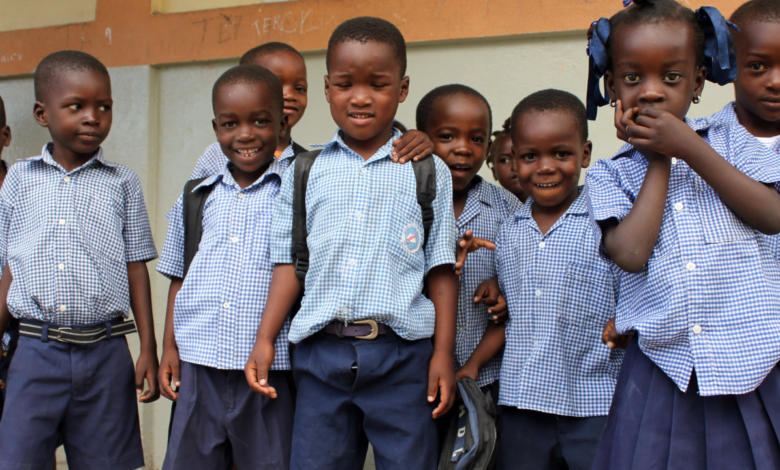Understanding the Haitian Educational System

Introduction to Education in Haiti
Haitian Educational System has always been more than just a formal process — it’s seen as a pathway to opportunity and a means to break the cycle of poverty. Despite significant challenges, the Haitian people value learning and see it as a source of hope for future generations.
Historical Background
Haiti’s educational roots trace back to the early 19th century, influenced heavily by French models. Over time, political instability, economic hardship, and natural disasters have shaped and reshaped how the system operates.
The Role of Education in Haitian Society
In a country where economic opportunities are limited, education is viewed as a tool for empowerment. Parents often make sacrifices to send their children to school, even in the most remote villages.
Structure of the Haitian Education System
The Haitian education system is divided into primary, secondary, and higher education, with vocational training playing a crucial role in skill development.
Primary Education
Primary school typically lasts six years and focuses on basic literacy, numeracy, and life skills. It’s the foundation that prepares students for secondary education.
Secondary Education
Secondary school spans about seven years, split into lower and upper cycles. Subjects become more specialized, preparing students either for university or for technical careers.
Higher Education and Vocational Training
Haiti has several universities and technical institutes that cater to students aiming for professional careers. Vocational training is especially important for trades like agriculture, carpentry, and nursing.
Public vs. Private Education in Haiti
Government-Run Schools
Public schools are funded by the state but often face challenges such as limited resources, outdated materials, and overcrowding.
Privately Funded Institutions
The majority of Haitian students attend private schools, many of which are run by religious or nonprofit organizations. These often provide better facilities but come at a cost many families struggle to afford.
Curriculum and Language of Instruction
Core Subjects Taught
The curriculum covers mathematics, science, literature, history, and geography, with an emphasis on moral and civic education.
Creole and French in the Classroom
French has historically been the primary language of instruction, but Haitian Creole is increasingly recognized as a key language for inclusive education, especially in early grades.
Challenges Facing the Haitian Education System
Limited Access to Quality Schools
Rural areas often lack enough schools, forcing children to travel long distances or miss out on education altogether.
Economic Barriers for Families
School fees, uniforms, and supplies can be a significant burden, particularly for low-income households.
Impact of Political Instability and Natural Disasters
Earthquakes, hurricanes, and political unrest have repeatedly disrupted education, damaging infrastructure and displacing communities.
Educational Reforms and Government Initiatives
Programs to Increase Enrollment
The government has launched initiatives to provide free primary education and expand school infrastructure.
International Partnerships and Aid
Global organizations like UNICEF and the World Bank work with Haiti to improve teacher training, build schools, and supply educational materials.
The Role of Non-Governmental Organizations (NGOs)
Support in Rural Communities
NGOs often step in where the government’s reach is limited, ensuring children in remote areas have access to learning opportunities.
Infrastructure and Teacher Training Programs
They also invest in teacher education, school construction, and nutrition programs to keep students healthy and ready to learn.
Gender Equality in Haitian Education
Encouraging Girls’ Enrollment
Efforts are being made to address gender disparities by providing scholarships, safe school environments, and community awareness campaigns.
Addressing Cultural and Economic Factors
Some families prioritize boys’ education, but advocacy groups work to change these perceptions and show the value of educating girls.

Higher Education in Haiti
Universities and Research Institutions
Haiti’s higher education sector includes public and private universities, many of which collaborate with international academic partners.
Opportunities for Study Abroad
Scholarship programs give Haitian students the chance to study overseas, bringing back knowledge and skills to support national development.
The Future of Education in Haiti
Digital Learning and Technology Integration
Although internet access is limited, digital tools and radio-based learning programs are being explored to reach more students.
Building Resilience Through Education
The focus is on creating an education system that can withstand crises and continue to serve students in all circumstances.
Conclusion
The Haitian educational system faces immense challenges, but it also carries immense potential. Through a combination of government action, community involvement, and international support, Haiti can build a more inclusive, resilient, and accessible education system for all.
FAQs
- What is the literacy rate in Haiti?
The literacy rate in Haiti is estimated at around 61%, though it varies between urban and rural areas. - Are public schools in Haiti free?
Some public schools are free, but families often still need to cover costs for uniforms, books, and supplies. - What languages are used in Haitian schools?
French is the primary language of instruction, with Haitian Creole increasingly used, especially in early grades. - How long is compulsory education in Haiti?
Compulsory education lasts nine years, covering primary and lower secondary levels. - How is the government improving education access?
Through infrastructure development, free primary education programs, and teacher training initiatives.
Keep an eye for more news & updates on Evolant Agency!




